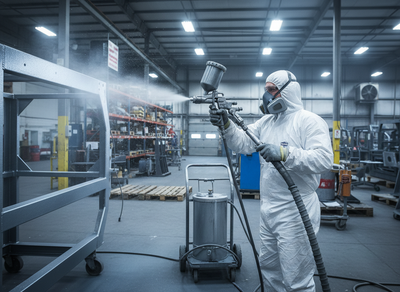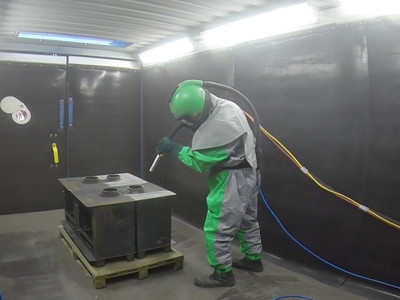18th Jun 2025
Compressed air is fundamental to any blasting operation. The right air pressure, quality, and supply system directly influence blasting efficiency, surface finish, and equipment longevity. Understanding these factors helps optimise blasting performance and reduces downtime.
This blog draws on industry insights to explain how compressed air in blasting impacts results and what you can do to maintain optimal conditions.
Why compressed air matters in blasting
Blasting relies on the force of compressed air to propel abrasive media at high speeds. The more consistent and powerful the air supply, the more effective the blast. Inadequate air pressure or poor air quality can result in patchy surfaces, slower progress, increased wear on components, and ultimately, higher costs.
Key roles of compressed air in blasting include:
- Maintaining consistent blasting pressure
- Delivering the abrasive media effectively
- Clearing dust and debris from surfaces (if the blast pot has blow-down capability)
- Preventing moisture-related clogging and corrosion
Optimal blasting air pressure
Blasting air pressure directly impacts the speed and force of the abrasive hitting the surface. Pressure losses can occur due to hose length, restrictions, or inadequate compressor size.
Tips for maintaining correct blasting pressure:
- Check nozzle pressure regularly, not just compressor output
- Use properly sized hoses to reduce pressure drop
- Avoid sharp bends and unnecessary couplings
- Choose a compressor with enough capacity to handle your blasting setup
The importance of air quality
Poor air quality can drastically reduce blast air efficiency. Moisture and oil in the air can cause abrasive media to clump or stick, leading to blockages and uneven blasting. The ISO 8573-1 standard classifies air purity levels for contaminants like water, oil, and dust, providing guidelines for acceptable air quality. For blasting, clean and dry air is vital. Maintaining proper air quality prevents equipment damage and improves abrasive flow, supporting a consistent finish.
To maintain high air quality:
- Use efficient moisture separators and air dryers
- Regularly drain your compressor tank and filters
- Install inline filters to catch oil vapour and particulates
- Monitor dew point in humid conditions
Maintaining compressed air systems
Regular maintenance of your compressed air system supports both performance and longevity. Neglecting these can cause pressure drops and contamination, resulting in inconsistent blasting and increased downtime. For expert compressor servicing and upkeep, Airblast Eurospray works closely with trusted specialist partners to ensure your system runs smoothly.
Maintenance checklist:
- Inspect hoses, fittings, and valves for leaks or wear
- Clean or replace filters on a scheduled basis
- Monitor compressor oil levels and change as recommended
- Test system output and pressure drops under load
- Schedule professional servicing with Airblast Eurospray at regular intervals
Practical tips to optimise compressed air in blasting
- Use pressure gauges at the nozzle to verify actual blasting pressure
- Choose compressors with enough cfm capacity for your blasting setup
- Minimise hose length and avoid sharp bends to reduce pressure loss
- Maintain air quality standards with appropriate drying and filtration
- Regularly inspect and service your compressed air system
Final thoughts
Efficient blasting doesn’t come down to abrasive choice alone – compressed air in blasting plays a central role in achieving consistent, high-quality results. Investing in your air system and keeping it well-maintained can deliver long-term gains in productivity, quality, and safety.
Need help selecting or maintaining your compressed air setup? Get in touch – we can help you get the most from your blasting equipment.
For more detailed information on compressed air systems tailored to blasting, check out Airblast’s compressed air solutions.




